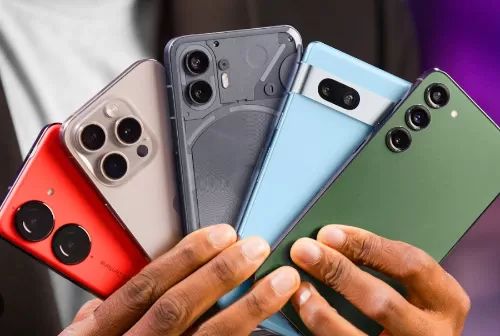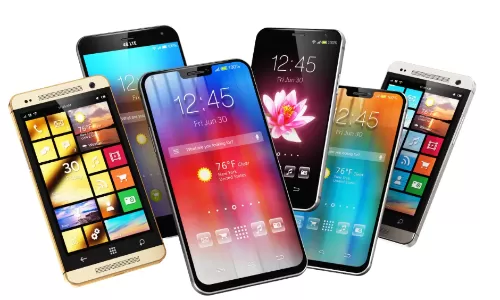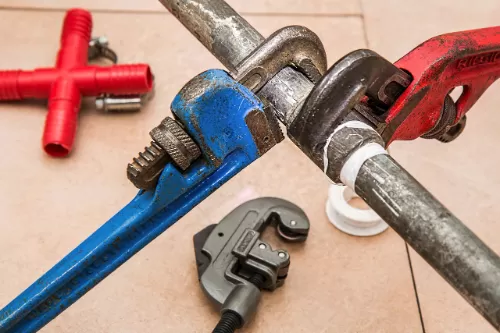Related searches

They serve as communication hubs, entertainment centers, and productivity tools. This guide provides an overview of smartphones, key features to consider, and tips for choosing the right device for your needs.
What is a Smartphone?
A smartphone is a portable electronic device that combines the functionality of a mobile phone with the capabilities of a computer. It typically includes:
Touchscreen Interface: A high-resolution display that allows users to interact with apps, browse the web, and view content.
Operating System (OS): Software that manages hardware and provides a platform for applications. Popular OS options include Apple's iOS, Google's Android, and others.
Connectivity: Features like cellular data, Wi-Fi, Bluetooth, and GPS for communication and location-based services.
Applications (Apps): Software programs that provide various functions, from social media and messaging to productivity and gaming.
Key Features of Smartphones
Display:
Size and Resolution: Displays range from small screens (about 4-5 inches) to large (over 6 inches). Higher resolution screens (e.g., Full HD, Quad HD, 4K) offer clearer, sharper visuals.
Type: OLED, AMOLED, and LCD are common display types. OLED and AMOLED provide vibrant colors and deep blacks, while LCDs are generally more cost-effective.
Processor (CPU) and Performance:
Overview: The processor is the brain of the smartphone, affecting its speed and performance. Look for devices with powerful processors for smooth multitasking and gaming.
Brands: Common processors include Qualcomm Snapdragon, Apple A-series, and MediaTek.
Memory and Storage:
RAM: Random Access Memory (RAM) affects the device’s ability to handle multiple tasks simultaneously. More RAM generally means better performance.
Internal Storage: Storage capacity (e.g., 64GB, 128GB, 256GB) determines how much data, apps, and media you can store. Some phones offer expandable storage via microSD cards.
Camera:
Rear Camera: Main camera(s) for taking photos and videos. Consider factors like megapixel count, aperture size, optical image stabilization (OIS), and additional features (e.g., wide-angle, telephoto lenses).
Front Camera: Used for selfies and video calls. Look for a higher resolution if you frequently use this feature.
Additional Features: Features such as night mode, portrait mode, and 4K video recording can enhance your photography experience.
Battery Life:
Capacity: Measured in milliampere-hours (mAh), higher capacity batteries generally offer longer usage times. Battery life can also depend on the device’s power efficiency and usage patterns.
Charging: Look for fast charging and wireless charging capabilities for convenience.
Operating System (OS):
iOS: Apple’s operating system, known for its smooth performance, security features, and extensive app ecosystem.
Android: Google’s OS, offering more customization options, a wide range of devices, and integration with Google services.
Build and Design:
Materials: Common materials include glass, metal, and plastic. Glass and metal often provide a premium feel but can be more fragile.
Water and Dust Resistance: Look for IP ratings (e.g., IP67, IP68) if you need protection against water and dust.
Connectivity and Other Features:
5G: Support for the latest cellular technology for faster data speeds and improved connectivity.
Bluetooth: For pairing with wireless devices like headphones and smartwatches.
NFC: Near Field Communication for contactless payments and data transfer.
Fingerprint Sensor/Face Recognition: For secure device unlocking and authentication.
Tips for Choosing the Right Smartphone
Determine Your Needs:
Usage: Consider how you use your smartphone. If you’re into gaming, look for high performance and large display features. For photography enthusiasts, prioritize camera quality.
Set a Budget:
Range: Smartphones are available at various price points. Decide how much you are willing to spend and look for devices within that range.
Compare Models:
Research: Compare specifications, features, and reviews of different models to find the one that best suits your needs and preferences.
Consider Future Proofing:
Longevity: Opt for a device with good performance and software support to ensure it remains functional and updated for several years.
Check for Software Updates:
Support: Ensure the manufacturer provides regular software updates for security and feature enhancements.
Try Before You Buy:
Hands-On: Visit a store to handle the device and test its features. Check the feel, screen quality, and ease of use.
Conclusion
Smartphones have revolutionized the way we communicate, work, and entertain ourselves. By understanding key features and considering your specific needs and budget, you can choose a smartphone that enhances your daily life and keeps you connected. Whether you’re looking for cutting-edge technology or a reliable device, taking the time to research and evaluate your options will help you find the perfect smartphone for you.








